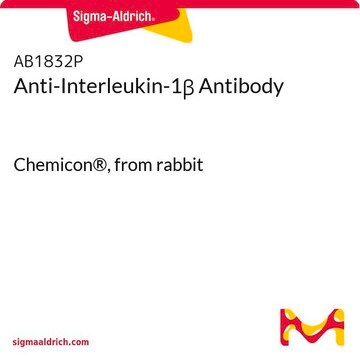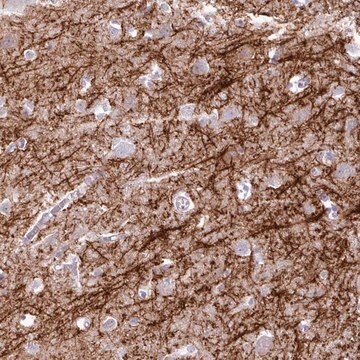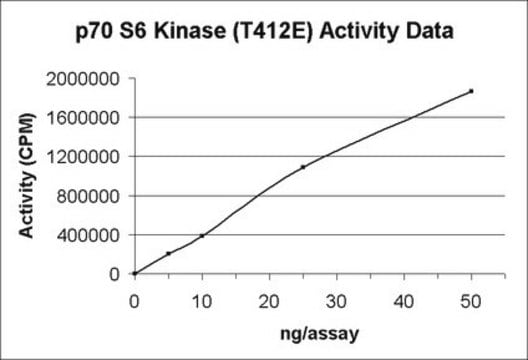14-327-M
JNK1α1/SAPK1c Protein, active, 10 µg
Active, recombinant full-length human JNK1α1/SAPK1c with an N-terminal His-tag, for use in Kinase Assays.
About This Item
Recommended Products
biological source
human
Quality Level
recombinant
expressed in Sf21 cells
product line
Upstate®
specific activity
(For Specific Activity data, refer to the Certificate of Analysis for individual lots of this enzyme.)
mol wt
Mw 45 kDa
purified by
(Ni2+/NTA-agarose)
species reactivity
human
manufacturer/tradename
Upstate®
technique(s)
activity assay: suitable (kinase)
accession no.
(FUNCTION: SwissProt: P45983 # JNK1 isoforms display different binding patterns: beta-1 preferentially binds to c-Jun, whereas alpha-1, alpha-2, and beta- 2 have a similar low level of binding to both c-Jun or ATF2. However, there is no correlation between binding and phosphorylation, which is achieved at about the same efficiency by all isoforms. )
NM_002750.2
NCBI accession no.
UniProt accession no.
Gene Information
human ... MAPK8(5599)
General description
Packaging
Also available in 250μg size (catalog number 14-327M).
Quality
Target description
Other Notes
Legal Information
Disclaimer
Signal Word
Warning
Hazard Statements
Precautionary Statements
Hazard Classifications
Skin Sens. 1
Storage Class Code
10 - Combustible liquids
WGK
WGK 1
Flash Point(C)
Not applicable
Certificates of Analysis (COA)
Search for Certificates of Analysis (COA) by entering the products Lot/Batch Number. Lot and Batch Numbers can be found on a product’s label following the words ‘Lot’ or ‘Batch’.
Already Own This Product?
Find documentation for the products that you have recently purchased in the Document Library.
Our team of scientists has experience in all areas of research including Life Science, Material Science, Chemical Synthesis, Chromatography, Analytical and many others.
Contact Technical Service








